Ligurian Focaccia
Ligurian focaccia is crunchy on the outside and soft inside with a satisfying amount of salt and olive oil! You’ll find it’s hard to stop at just one slice!
Don’t be put off by the time required to make this recipe. The majority is resting and rising time. Actual hands-on time is just 30 minutes.
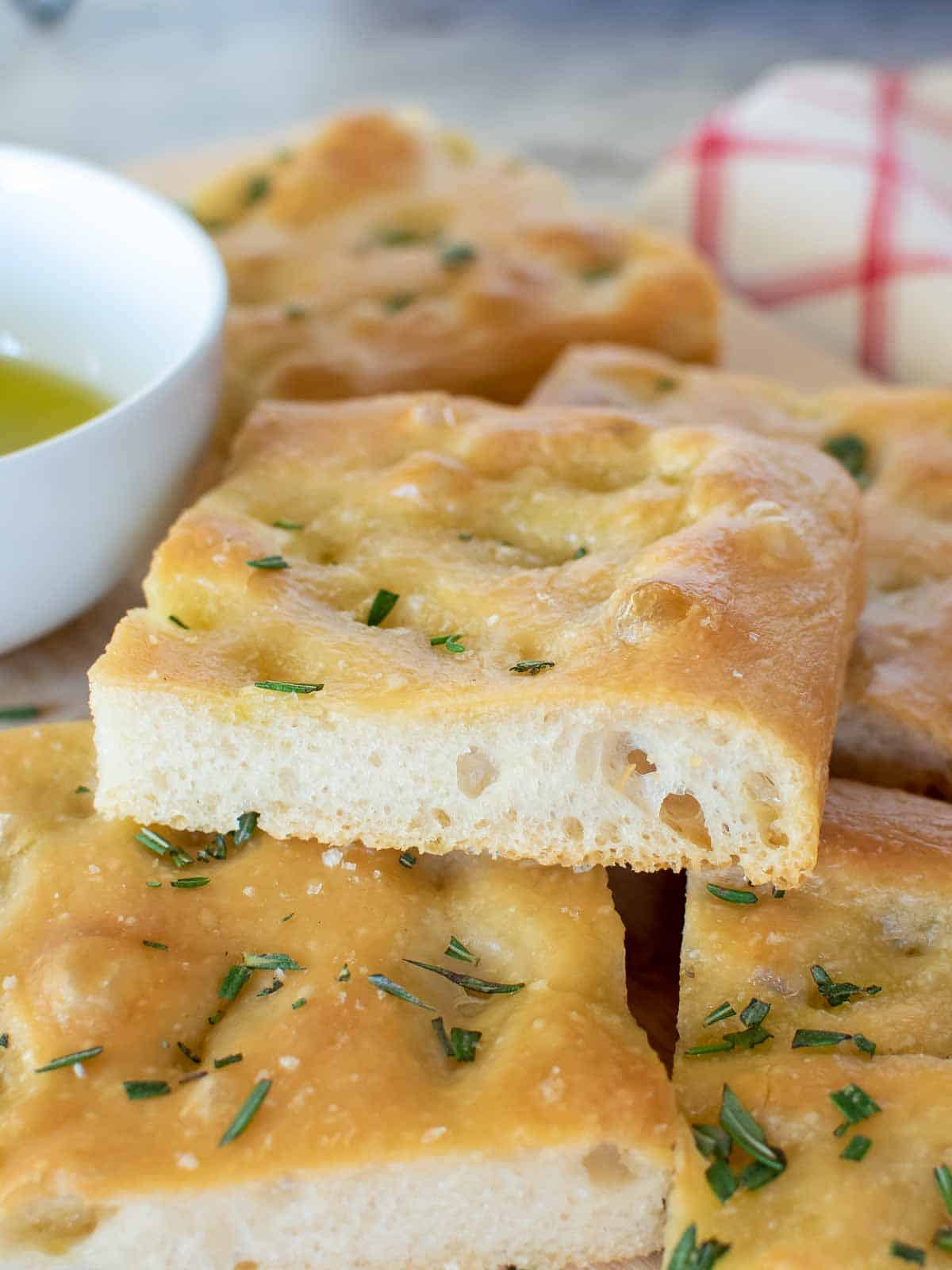
Why you’ll love this recipe
Ligurian focaccia is salty and moist with olive oil but not oily. In fact, this recipe is buttery, soft, and crunchy all at the same time.
When you put a knife through this bread and hear the crunch of the crust, you’ll know you’ve done the right thing making this recipe. But once you bite into the crispy crust and then into the tender bread inside, only then will you really understand what it is to eat Ligurian focaccia.
This recipe uses a high-hydration dough. That means a higher water ratio to flour. It can be hard to handle because is it quite wet. However, the benefits of this dough is the moist, light, and soft crumb.
This dough is not kneaded but stretched and folded instead. A new technique perhaps, but it takes the hard work of kneading out of bread making.
What is Ligurian focaccia?
Focaccia is an Italian bread with minimal toppings and is often served as part of a meal. This focaccia is from the northwestern region of Italy called Liguria. While the region is well known for nut free pesto, this bread is eaten by locals all day long.
The key flavor in Ligurian focaccia is olive oil. Liguria produces some of the best olive oil in Italy – a delicate olive oil. So for an ideal Ligurian focaccia be sure to use fresh, mild-tasting oil.
But the biggest difference with this focaccia from Liguria is the brine which is poured over the dough before the final rise. This brine settles into the dimples and around the edges creating salty pops of flavor and a golden, crunchy exterior.
Ligurian focaccia is known as fugassa in the local dialect and is enjoyed dipped in coffee for breakfast, as a snack, and alongside lunch and dinner. Usually around 3/4 inch or 2 cm in thickness, this special bread is becoming popular everywhere.
While the long fermentation produces excellent flavor, if you don’t have that much time try my Focaccia Genovese.
For complete ingredient quantities and full instructions, please scroll to the printable recipe card at the bottom of the page.
Ingredient notes
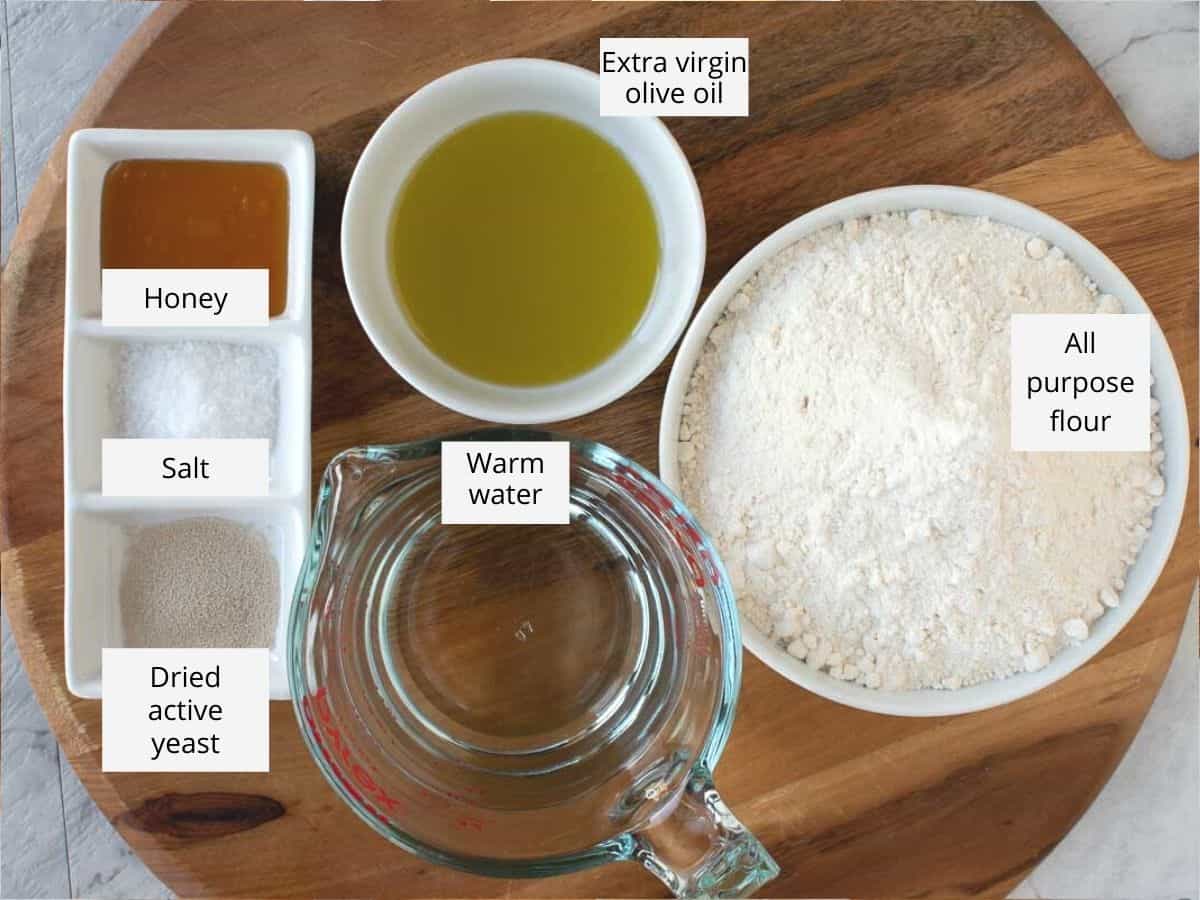
The ingredients needed for Ligurian focaccia are similar to many bread recipes with just a few of exceptions.
- All purpose flour – usually I would use strong bread flour however this recipe works perfectly with the softness of all purpose (plain) unbleached flour.
- Extra virgin olive oil – olive oil is one of the key flavors and is used in almost all the steps in this recipe so it is important to choose a good olive oil that is not too bitter. Don’t be worried about using so much oil. A mild-tasting oil is perfect and the result is almost buttery.
- Salt – pure salt flakes are my choice for this recipe. If you use a fine salt, reduce the amount of salt in this recipe slightly.
Instructions
Begin this recipe the night before baking.
Prepare the dough
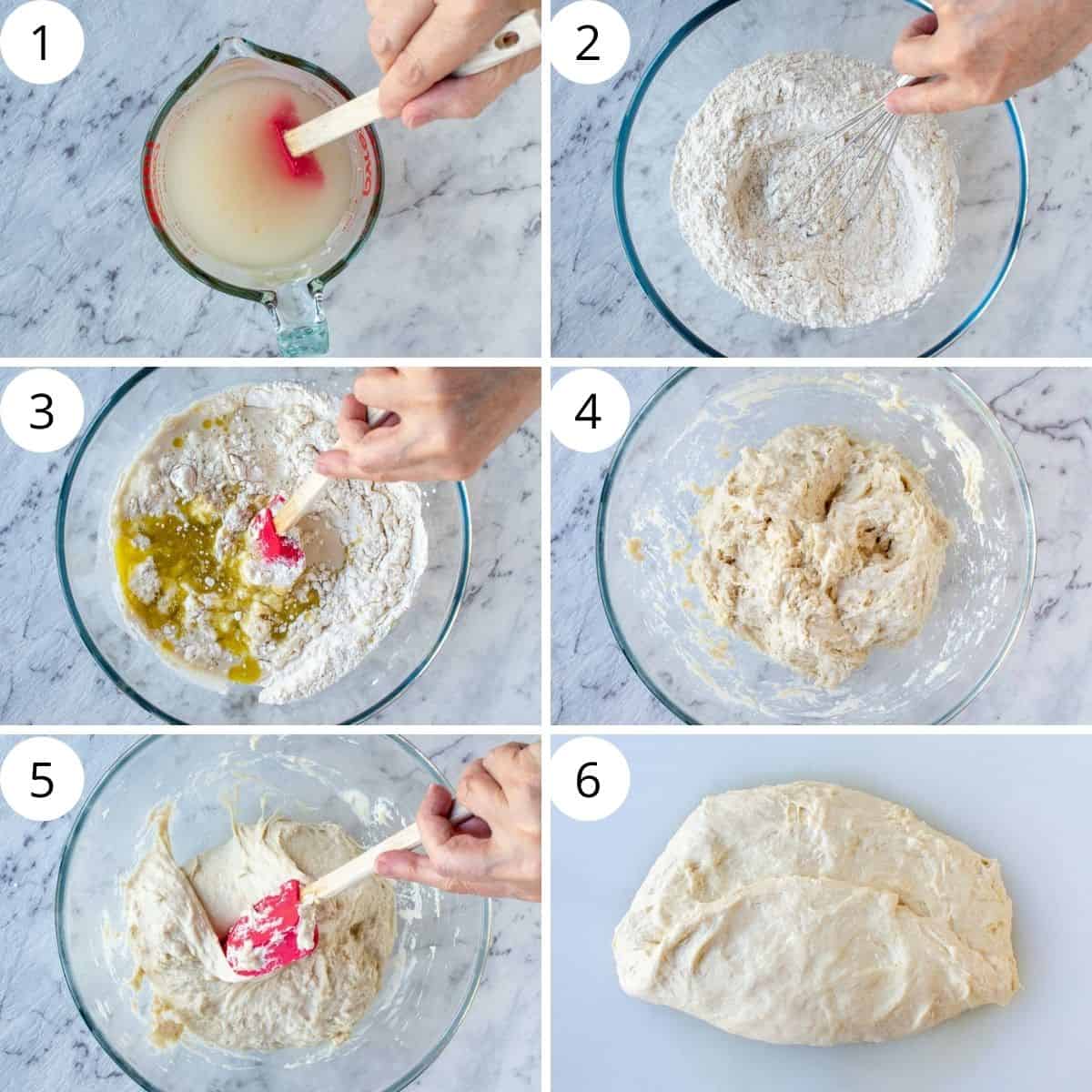
- Dissolve yeast in warm water and honey.
- Whisk flour and salt to combine well.
- Add yeast mixture and oil to flour.
- Combine ingredients then rest the dough for 15 minutes.
- Scrap and fold dough to strengthen.
- Turn out onto work surface.
Fold and rise overnight
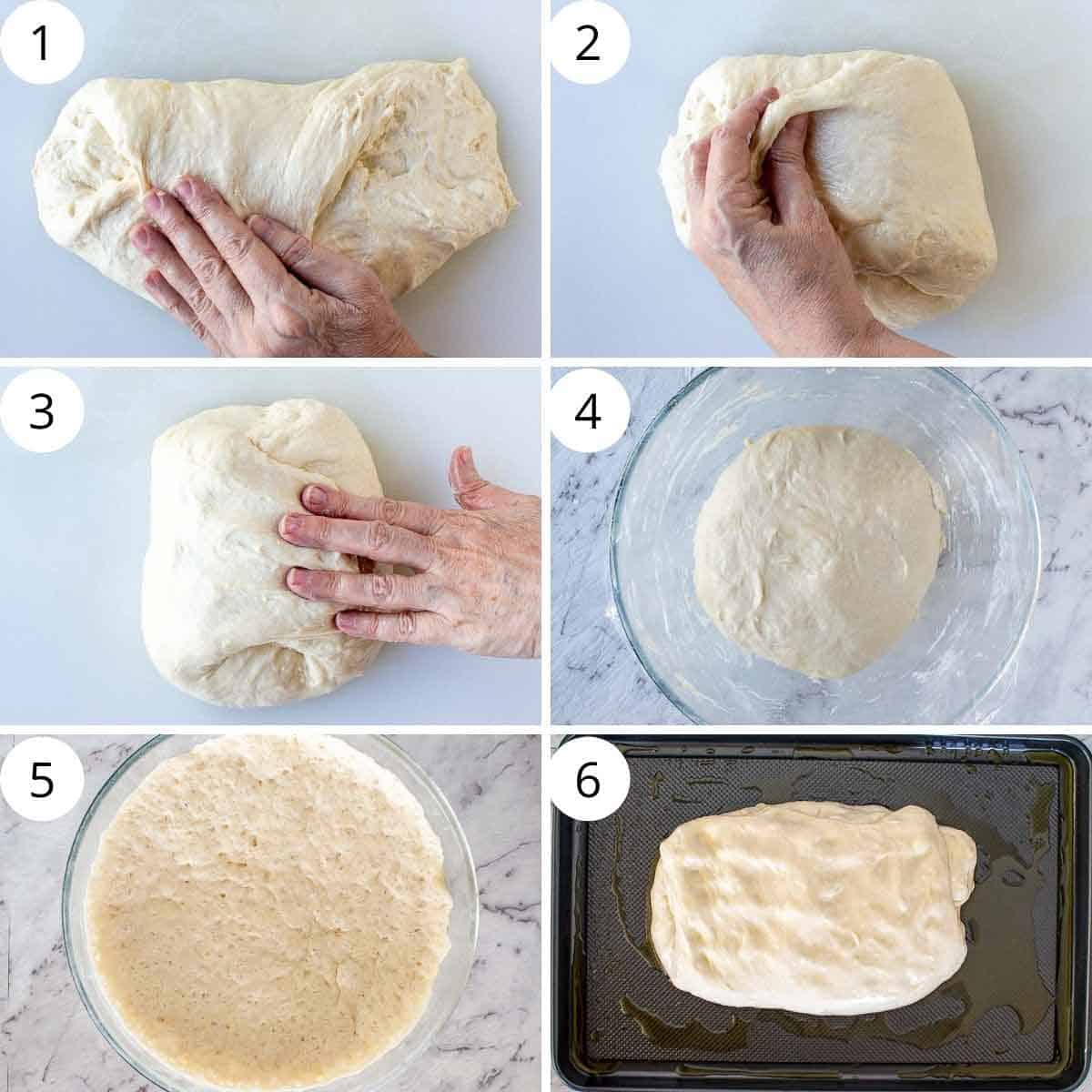
- Stretch and fold dough across from side to side.
- Fold dough up and over itself.
- Then fold down and over itself.
- Place the folded dough ball into large, oiled bowl.
- Rise at room temperature for 12-14 hours.
- Gently scrape out onto well oiled pan and repeat folding.
Prepare to bake
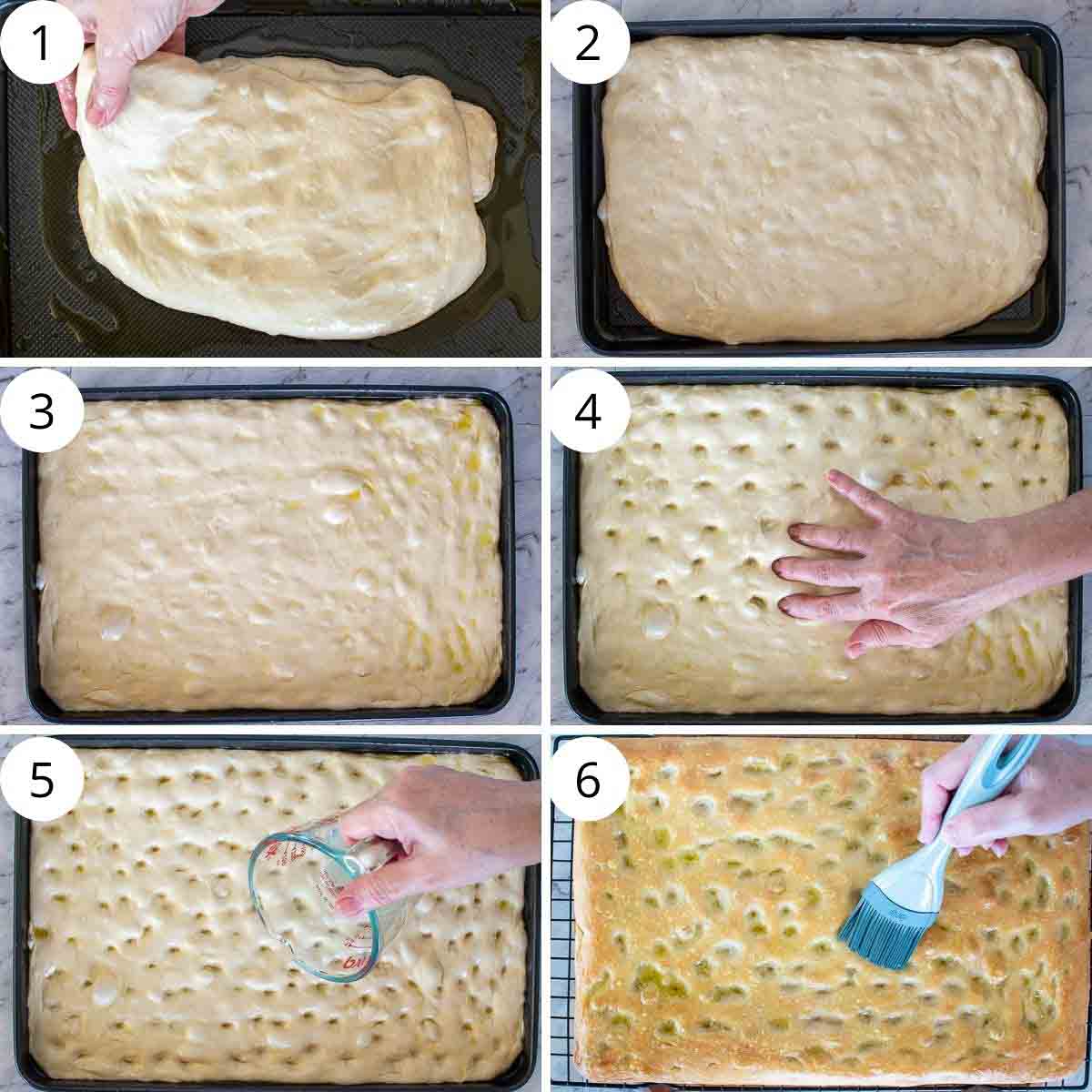
- Lift and stretch to fit the pan.
- It may not completely stretch.
- Allow to rest, stretching dough if it has shrunk back.
- Make deep dimples with fingers.
- Pour over brine and rise again before baking.
- After baking brush with abundant extra virgin olive oil.
Top Tips
For the best Ligurian focaccia, it is important to use good, mild-tasting olive oil and not to skimp on it. Use it liberally!
Also, the dough will be wet and you may not be used to that. Don’t add more flour. Just stretch and fold as best as you can. Use plenty of oil on your hands to assist you. It’s actually lots of fun!!
Be sure to choose the correct pan. Use the measurement provided to make a perfect focaccia that is just the right thickness. If you haven’t got the correct size pan, look for something slightly smaller.
After baking, it is crucial to remove the focaccia from the pan and onto a wire rack to cool. This prevents the bottom from becoming soggy and losing its crunch.
FAQ
It could be that the yeast was not fresh. In that case, there’s not a lot you can do but start again with fresh yeast. The unrisen dough can be rolled out very thin and baked as crackers.
Another issue could be that your kitchen may be particularly chilly. The dough may be rising but VERY slowly. To fix this, move the dough to a warm place. Try putting it in the turned-off oven with a bowl of hot water – the steam and warmth will activate that yeast.
The brine creates a crunchy, golden exterior because the water evaporates leaving just the salt.
While this is not a sourdough focaccia, it is easy to convert. Simply add 1 cup of sourdough starter to the initial dough and reduce the flour and water accordingly. Usually, that would mean reducing by 1/2 cup each of flour and water for a 50/50 sourdough starter.
You can store this Ligurian focaccia in an airtight container for a day or two. Alternatively, freeze by wrapping well in plastic wrap and then in a zip lock bag. Either way, the crunch will be gone but see below for reheating and “recrunching”.
Reheat by toasting or in a preheated oven. It will never be the same but it will still be really good. Never reheat in the microwave!
Serving suggestions
Ligurian focaccia is such a versatile bread.
- cut it into fingers and serve with a dip or spread.
- add it to your charcuterie board along with a bowl of Italian Salsa Verde.
- include this bread on your buffet table.
- slice it in half and toast for a delicious breakfast.
- fill with salami and cheese.
Eat this bread with meals or slice it in half and fill it as a sandwich. Whichever way you use it, you will be making this your go-to focaccia recipe.
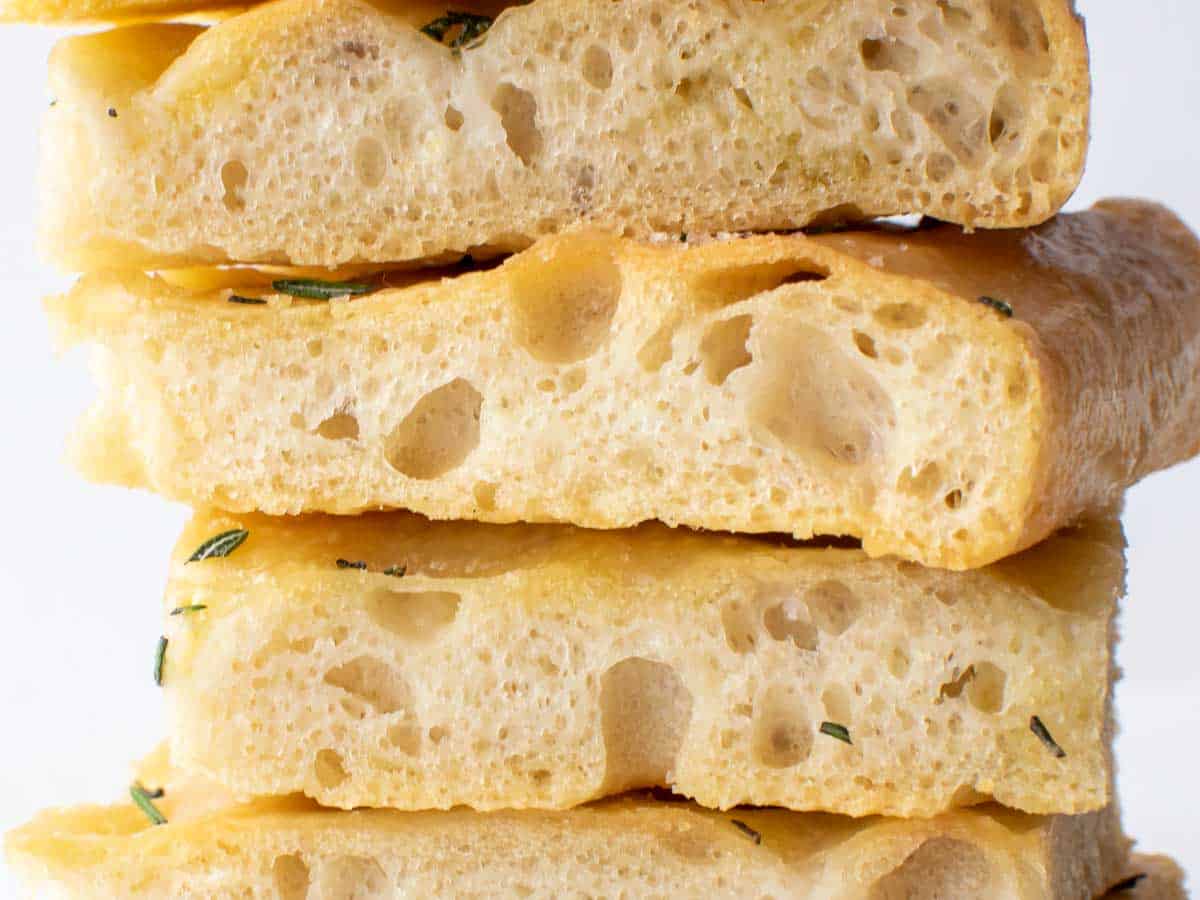
Recipes that go with this focaccia
Braised Chicken Italian style
Butterfly Roast Chicken
Minestrone Soup
Chicken and Vegetable Soup
Garlic Butter Sauce
Made this recipe?
Please let me know if you liked it by leaving a ★★★★★ star rating and a review below. And remember to subscribe to my newsletter – it’s free!
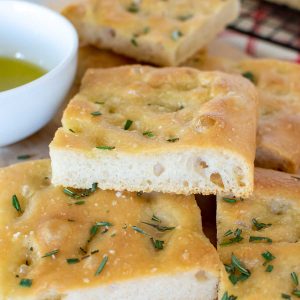
Ligurian Focaccia Recipe
Equipment
- 15in x 10in (38cm x 25cm) heavy baking pan
Ingredients
For the dough
- ½ teaspoon active dry yeast
- 1¾ cups (375 grams) lukewarm water
- 2 teaspoons honey
- 4 cups (500 grams) all purpose (plain) flour
- 2½ tablespoons extra virgin olive oil
- 2 teaspoons pure salt flakes
- 5 tablespoons extra virgin olive oil extra – as needed
- extra salt flakes for sprinkling on top
For the brine
- ¼ cup lukewarm water
- 1 teaspoon pure salt flakes
Instructions
- In a jug or small bowl mix together warm water, honey and yeast. Stir until dissolved.
- In a large bowl whisk together flour and salt then add the yeast mixture and the olive oil. Stir with a rubber spatula to combine all the ingredients. Scrape the side of the bowl clean.
- Cover with plastic wrap and set aside at room temperature for 15 minutes.
- After 15 minutes, uncover dough. Press the rubber spatula down between the dough and the side of the bowl. Using the spatula, lift the dough and fold it onto itself as if you are picking up the bottom of the dough and folding it over the top of the dough. Continue around the edge of the dough, lifting and folding. The dough become smooth.
- Oil a work surface with a little extra virgin olive oil and gently tip out the dough scraping the bowl as best as you can.
- Oil the bowl ready for the return of the dough.
- Press out gently to flatten slightly to degas a little. Pick up one side of the dough stretch it and fold it over to the other side. Repeat on all sides.
- Return the dough to the now oiled bowl. Cover with plastic wrap and set aside at room temperature for 12-14 hours or overnight. If your kitchen is warm, please see the notes below.
- The next day:- Spread 2 tablespoons of extra virgin olive oil onto baking pan with sides.
- Tip the dough gently onto the oiled 15in x 10in (38cm x 25cm) baking pan and repeat the folding as previously explained.
- Gently stretch the dough to fit the pan. You will need to place your hands under the dough and stretch it. Don't worry if it doesn't fully stretch to fit. Set aside for 30 minutes. During the time you'll be able to stretch it out to fit.
- After 30 minutes, make indentations with your fingers into the dough. Press in at an angle. Then mix together brine ingredients until salt is dissolved. Pour over dimpled dough. Allow to proof for 1 hour until puffy and bubbly.
- In the meantime preheat oven to 450°F (235°C).
- Sprinkle with flaky salt and bake on the centre rack for 20 minutes. Then move to the upper rack and bake for another 5-7 minutes until the top is golden brown.
- Remove from the oven and immediately turn onto a wire rack. Drizzle or brush 2 tablespoons of extra virgin olive oil over the baked focaccia. Don't worry if it pools in the dimples, the oil will gradually soak into the bread.
- Serve warm or at room temperature cut into large squares.
Notes
- Use lots of good, mild-tasting olive oil.
- Allow time to rise.
- If the temperature in your home is very warm, the dough will rise more quickly and 12-14 may be too long. In that case, you can proceed with the recipe after the dough doubles. Or put the well-covered dough in the fridge after it has doubled in size.
- Don’t add more flour. Just stretch and fold as best as you can. Use plenty of oil on your hands to assist you.
Nutritional Estimate Per Serving
Nutritional Disclaimer
Nutritional information is an estimate provided by an online nutrition calculator. For accurate results, it is recommended that the nutritional information be calculated based on the ingredients and brands you use.



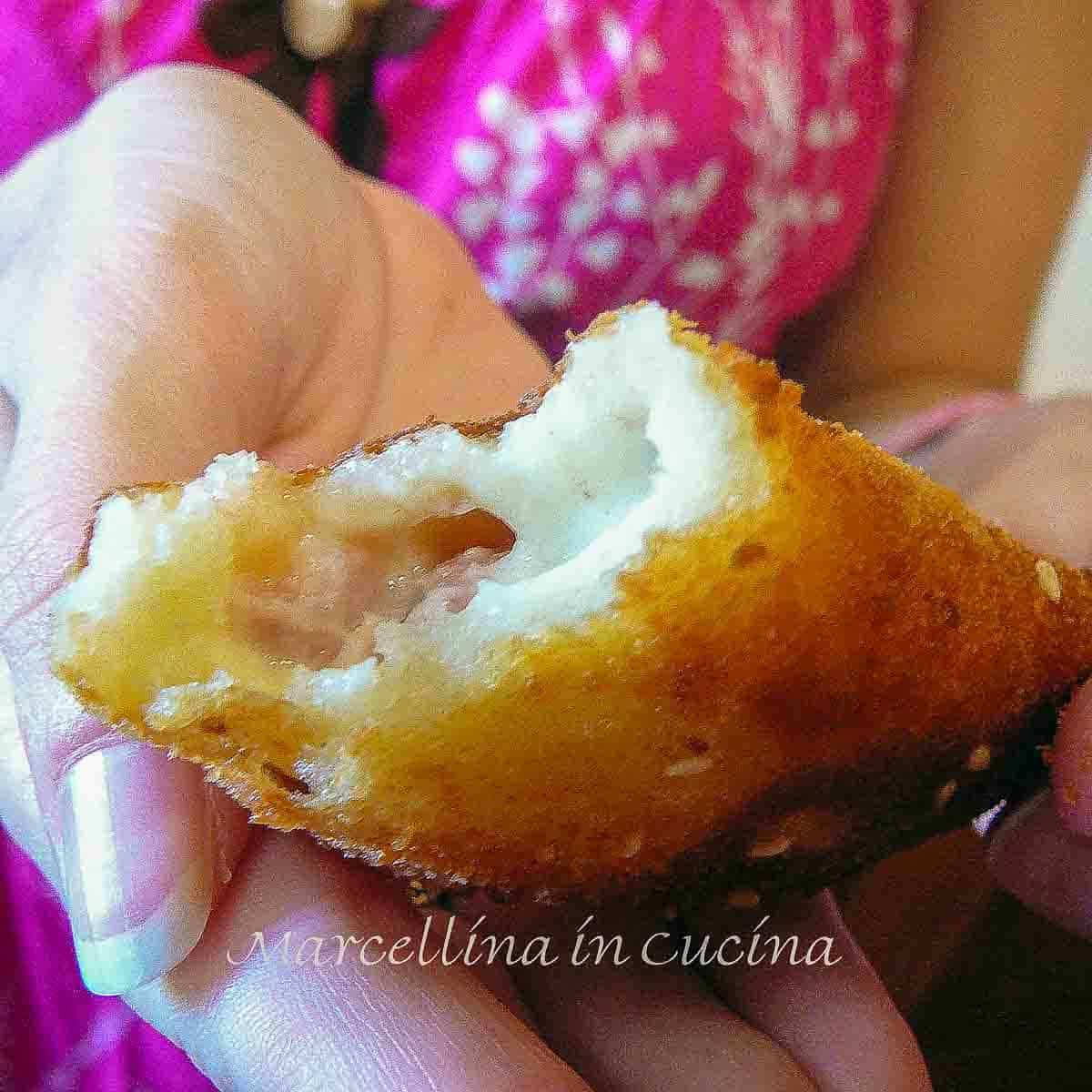
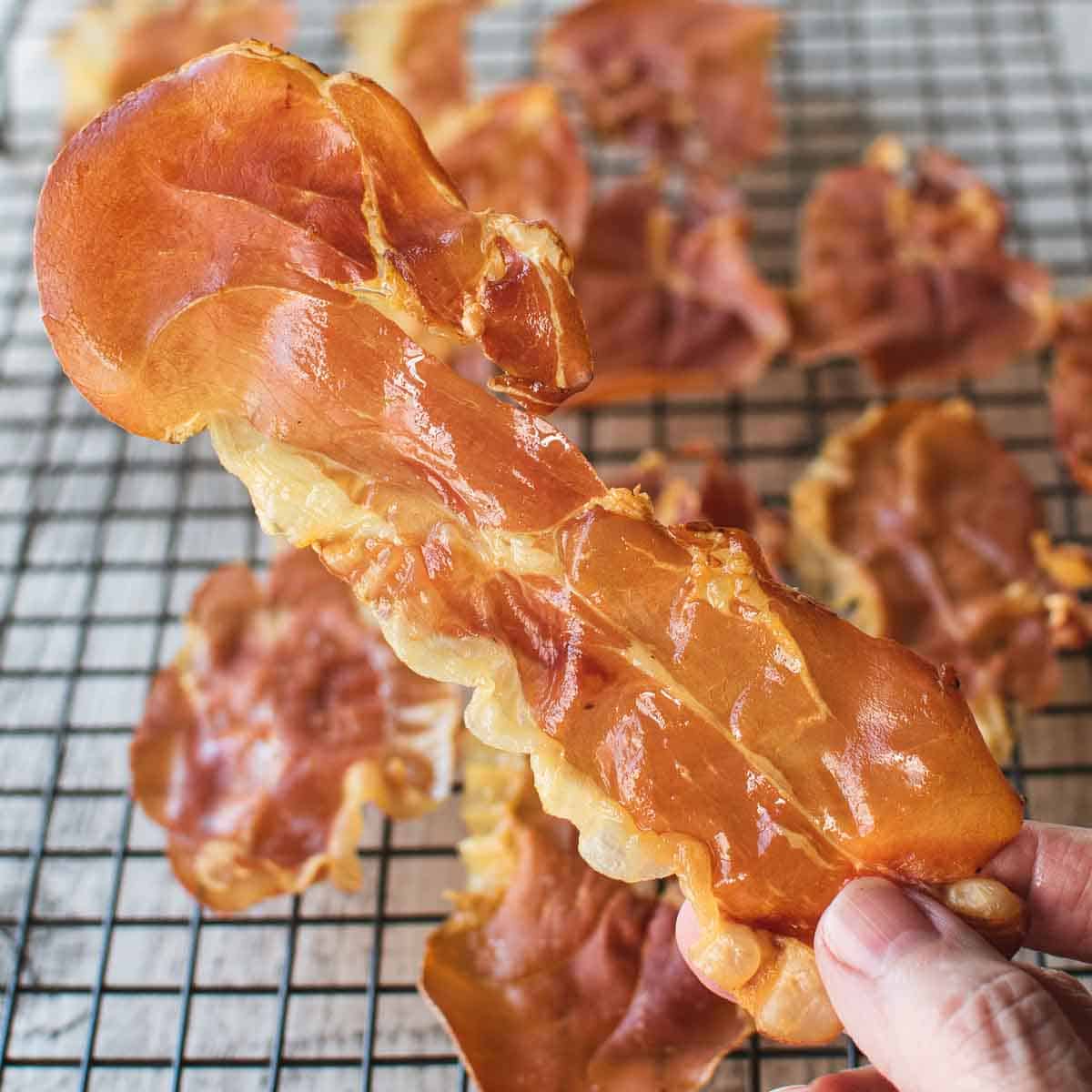
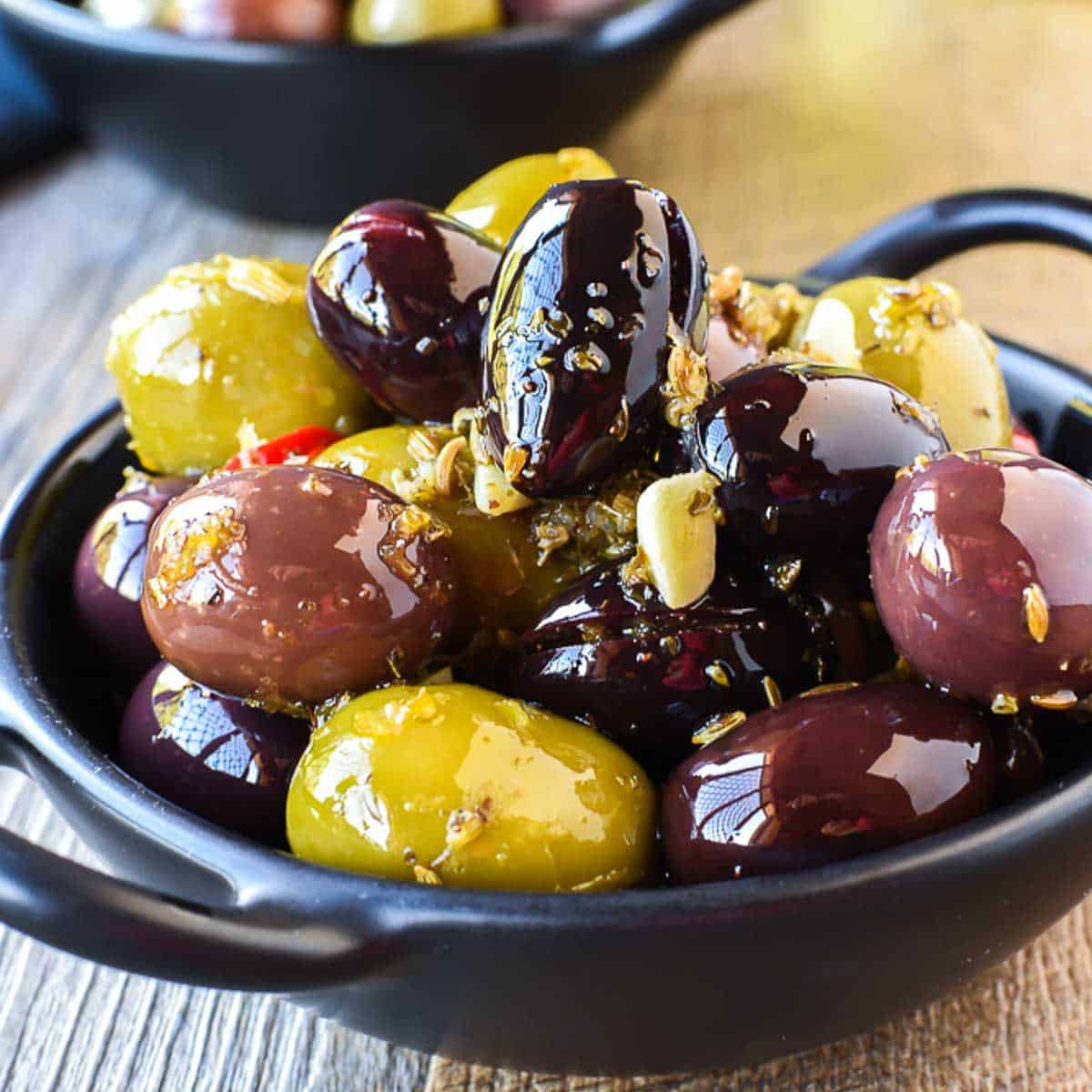
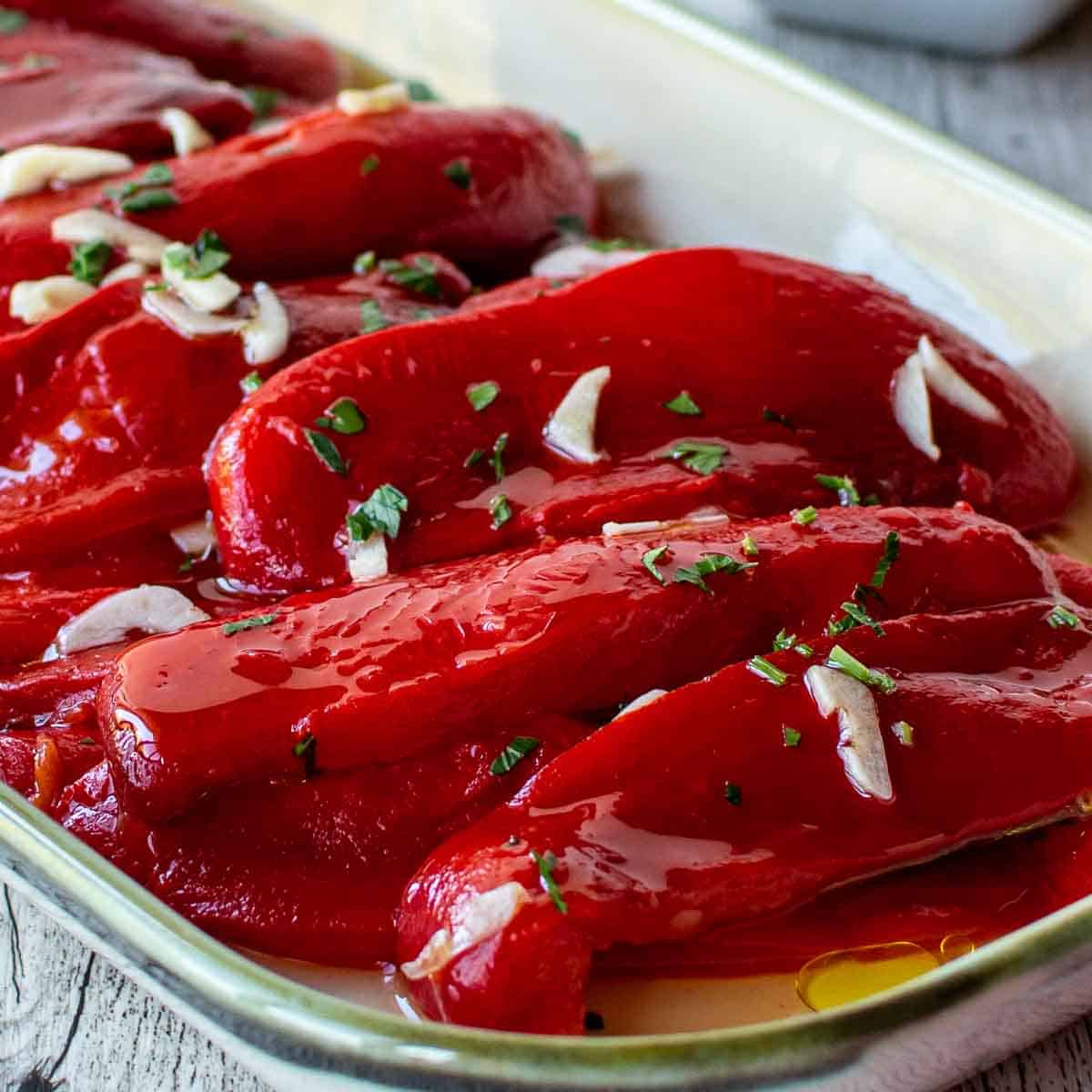


I made the dough for this yesterday was very hot here and by end of 13 hours it had risen massively I sat it for 24 hours and it did deflate to just under half followed the recipe but it never really bubbled up while proofing in the baking pan / should I have not sat it for that long in warmer weather ?
Katrina, definitely the temperature will affect this dough. This is basically a no knead bread and relies on the long rise to create structure in the dough. However, if the surrounding temperature is too warm and the dough proofs much more quickly, the gluten will eventually break down and create a sourdough starter. When this happens the dough just won’t rise again. This sounds like what has happened in your case. You could do one of two things. #1 – Allow the dough to rise at room temperature until it has almost doubled then refrigerate it until the 12-14 hours have passed. Or #2 – proceed with the recipe after the dough has doubled in size not waiting for the full 12-14 hours. I hope that helps. It’s a great focaccia recipe and I hope you try it again.
Tried this four times with same results. The dough rises very nicely initially and then falls in the second half of the 12-14 hour rise. Then, it does not rise again in the pan. I’ve tested my yeast successfully, bought new yeast and tested it successfully, put the dough on counter with under-cabinet lighting on all night to keep it warm, but always the same result in the morning. I have used same yeast for other breads with no issues.
Hi Mary, I’m so sorry that you’re having trouble with this focaccia recipe. I have tested this recipe extensively and have never had a problem. It is based on Samin Nosrat’s focaccia. If you haven’t heard of her, just google and she comes up easily.
This recipe only has a very small amount of yeast and will need that time to rise. Could it be that room temperature for you at the moment is quite warm? In that case, the dough may need to go into the fridge. I don’t usually suggest that because normally it takes a long time to warm up the next day, in my experience. But that might be the solution for you.
There is no need to use any type of warmth during the long overnight rise. It needs to be cool room temperature. This could be the problem. In any case, the rising and then the fall is normal. Once poured into the pan and folded, it will rise again.
Have you tried my Focaccia Genovese? This might suit you better, especially during the warmer months.
Most likely your dough gets overproofed (causing weakened gluten structure) so that it cannot hold as much gas anymore. Don’t rely on a specific amount of time when rising the dough, it’s only a ballpark measure. It will depend on the yeast, the flour, the temperature and so on. Instead, keep an eye on the dough during the first rise and proceed to the next step when it has doubled in size or so.
Btw, you can always slow down the proofing (or even pause it completely, again depending on yeast/temperature and so on) by putting the dough in the fridge. The proofing will continue when when you take it out of the fridge, once the dough gets up to temperature.
Don’t give up, this bread is worth the extra effort! 🙂
Exactly what happened to me yesterday
Excellent
delizioso. tante grazie!
Followed the directions to the T, but it didn’t rise after being spread onto the pan. Not great.
Hi Katie, I’m sorry that happened to you. Was your yeast fresh? Did you leave the dough in a warm enough place? Is it particularly chilly in your kitchen? These could all be reason for why this happened. I hope you try again. Please let me know if I can help with more trouble shooting. Kind regards, Marcellina xx
Hi, is half a teaspoon of yeast enough? Seems very little.
Hi Sandra, yes that’s right. Remember that in this particular focaccia recipe you’ll be setting the dough aside at room temperature for 12-14 hours or overnight. Following that, you won’t knock the air out of the dough, just gently tip it into the prepared pan. Then it’s another slow rise of 1 1/2 hours. This long rise adds flavor to the dough and it’s why you don’t need a lot of yeast. If you’d prefer a quicker focaccia try my https://www.marcellinaincucina.com/focaccia-genovese/
Love all your photos so that you can follow the recipe through each stage knowing you are doing it properly.
Hope you get to make this Ligurian Focaccia, Karen – it really is worth it!
So true ! Hard to stop at one slice ! Thank you so much !
I’m a bread fiend!! Thank you!
I love the idea of pouring brine onto the surface before baking. The bread came out absolutely splendid, Marcellina.
Angie, I’m so in love with this focaccia – it’s superbly crunchy and delicious!
MMMM…these looks so delicious…love the application and the pictures.
I have tried this a few times and it is an incredibly good recipe! It is sooo satisfying to take it out of the oven…! Also the step by step pictures and the tips are super useful, pretty key actually! Thanks so much! 😊
You’re welcome, Mireia! I love to hear that my recipes and photos have helped. I test recipes extensively and aim to make them achievable to all so this is wonderful feedback. Thank you so much!